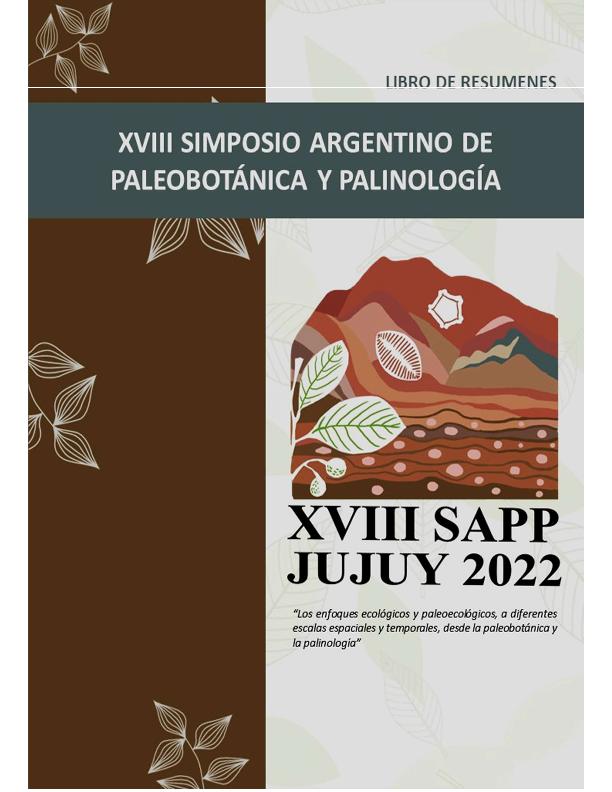Evento
Advantages of feeding on Dicroidium and Johnstonia (Corystospermaceae, Triassic): infrared spectroscopical analysis explains herbivore’s food preferences
Tipo del evento:
Simposio
Nombre del evento:
XVIII Simposio Argentino de Paleobotánica y Palinología: Los enfoques ecológicos y paleoecológicos diferentes escalas espaciales temporales, desde la paleobotánica y la palinología
Fecha del evento:
28/09/2022
Institución Organizadora:
Asociación Latinoamericana de Paleobotánica y Palinología;
Título de la revista:
Boletín de la Asociación Latinoamericana de Paleobotánica y Palinología
Editorial:
Asociación Latinoamericana de Paleobotánica y Palinología
ISSN:
0325-0121
Idioma:
Inglés
Clasificación temática:
Resumen
This contribution provides the first chemical, biomechanical, and physiological data that help explain the food preferences of herbivores that feed on pinnules of Dicroidium odontopteroides and Johnstonia stelzneriana (Corystospermales, Corystospermaceae). Fossils were collected from two Triassic localities located on the southern side of the Cacheuta Hill (Cacheuta, Mendoza, Argentina): Quebrada del Durazno (upper Potrerillos Formation) and Trinchera La Mary (lower Cacheuta Formation). Some of the studied samples are affected by herbivory, showing external, foliage damage, i.e., traces by hole, surface and marginal feeding, sucking and piercing, and possibly gall. Specimens were chemically analyzed by Fourier Transform Infrared spectroscopy. Chemical data were used to calculate different pinnular properties, i.e., density, tensile strength (resistance to fracture), tensile modulus of elasticity (stiffness), leaf mass per area (metabolic cost of tissue construction), photosynthetic capacity, and maximum rate of Rubisco carboxylase activity (maximum rate at which leaves are able to fix carbon during photosynthesis). Pinnules show an aliphatic-rich composition with organic chemical groups derived from well-preserved and diagenetically resistant polymers, e.g., lignins, tannins, phenylpropanoids, and resin-like compounds. Comparisons with published values of the calculated, aforementioned biomechanical/ physiological properties, obtained for Paleozoic and Mesozoic taxa, indicated that, theoretically, D. odontopteroides and J. stelzneriana had relatively low values of density, resistance to fracture, stiffness, and metabolic costs of tissue construction. This implies that the studied pinnules were likely deciduous, having a short-expected lifespan and a resource-acquisitive leaf strategy that resulted in relatively small, fast-growing, tender, flexible, and cheaply constructed pinnules. On the other hand, they showed relatively high values of photosynthetic capacity and carboxylase activity, resulting in a high production of carbohydrates (nutrients). These characteristics suggest that pinnules of D. odontopteroides and J. stelzneriana may have been a high-quality and attractive food source for herbivores, i.e., “easy to eat and digest” (tender tissues), safe (non-poisonous), palatable (non-astringent), and nutritious (rich in carbohydrates). This case study provides new information on the chemistry, biomechanics, and physiology of the Corystospermaceae with important implications for a better understanding of some plant-animal interactions (e.g., food preferences of herbivores), particularly when the body fossils of the herbivores themselves are absent. Chemical studies will enhance our understanding of the relationship between paleodiets and paleoenvironments, leading to more realistic reconstructions of the complex, food webs of the high-latitude, Gondwanan Triassic ecosystems.
Palabras clave:
FEEDING
,
DICROIDIUM
,
JOHNSTONIA
,
TRIASSIC
,
FTIR
,
HERBIVORE’S FOOD PREFERENCES
Archivos asociados
Licencia
Identificadores
Colecciones
Eventos(IANIGLA)
Eventos de INST. ARG. DE NIVOLOGIA, GLACIOLOGIA Y CS. AMBIENT
Eventos de INST. ARG. DE NIVOLOGIA, GLACIOLOGIA Y CS. AMBIENT
Citación
Advantages of feeding on Dicroidium and Johnstonia (Corystospermaceae, Triassic): infrared spectroscopical analysis explains herbivore’s food preferences; XVIII Simposio Argentino de Paleobotánica y Palinología: Los enfoques ecológicos y paleoecológicos diferentes escalas espaciales temporales, desde la paleobotánica y la palinología; Jujuy; Argentina; 2022; 48-49
Compartir




